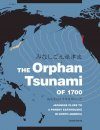By: Brian F Atwater(Author), Musumi-Rokkaku Satoko(Author), Satake Kenji(Author), Tsuji Yoshinobu(Author), Ueda Kazue(Author), David K Yamaguchi(Author)
135 pages, colour & b/w photos, colour & b/w illustrations
![The Orphan Tsunami of 1700 The Orphan Tsunami of 1700]()
Click to have a closer look
About this book
Customer reviews
Biography
Related titles
About this book
A puzzling tsunami entered Japanese history in January 1700. Samurai, merchants, and villagers wrote of minor flooding and damage. Some noted having felt no earthquake; they wondered what had set off the waves but had no way of knowing that the tsunami was spawned during an earthquake along the coast of northwestern North America. This orphan tsunami would not be linked to its parent earthquake until the mid-twentieth century, through an extraordinary series of discoveries in both North America and Japan.
The Orphan Tsunami of 1700, now in its second edition, tells this scientific detective story through its North American and Japanese clues. The story underpins many of today's precautions against earthquake and tsunami hazards in the Cascadia region of northwestern North America. The Japanese tsunami of March 2011 called attention to these hazards as a mirror image of the transpacific waves of January 1700.
Customer Reviews
Biography
Brian F. Atwater, Musumi-Rokkaku Satoko, Satake Kenji, Tsuji Yoshinobu, Ueda Kazue, and David K. Yamaguchi pooled their backgrounds in geology, geophysics, forestry, history, and language.
By: Brian F Atwater(Author), Musumi-Rokkaku Satoko(Author), Satake Kenji(Author), Tsuji Yoshinobu(Author), Ueda Kazue(Author), David K Yamaguchi(Author)
135 pages, colour & b/w photos, colour & b/w illustrations
"The relevance of this history to our present-day situation is underscored. This book about the 'big one' of long ago should be of special interest to all of us right now."
– History Link
"A meticulous and comprehensive piece of scholarship that both draws on the authors' groundbreaking research and pulls together hundreds of references on the topic [...] The text is highly readable and requires no special expertise, only a scientific curiosity and a willingness to participate in the assembly of discovery."
– Oregon Historical Quarterly
"Paddling around the salt marshes and tidal flats of Washington State, Atwater discovered evidence of earthquakes and giant waves of a magnitude that seemed, to many, inconceivable – until late last year, when a tsunami of similar power tore across the Indian Ocean killing more than 200,000."
– Time Magazine, naming Brian Atwater one of the world's 100 most influential people of 2005



































